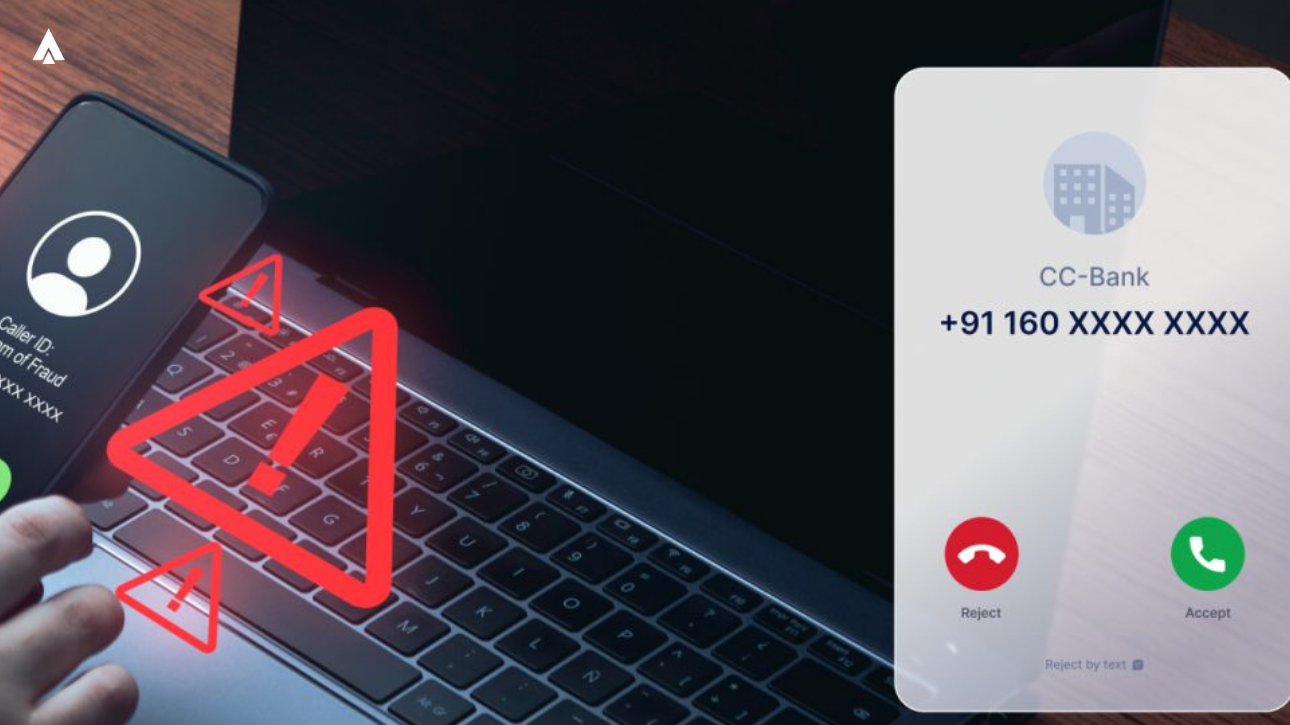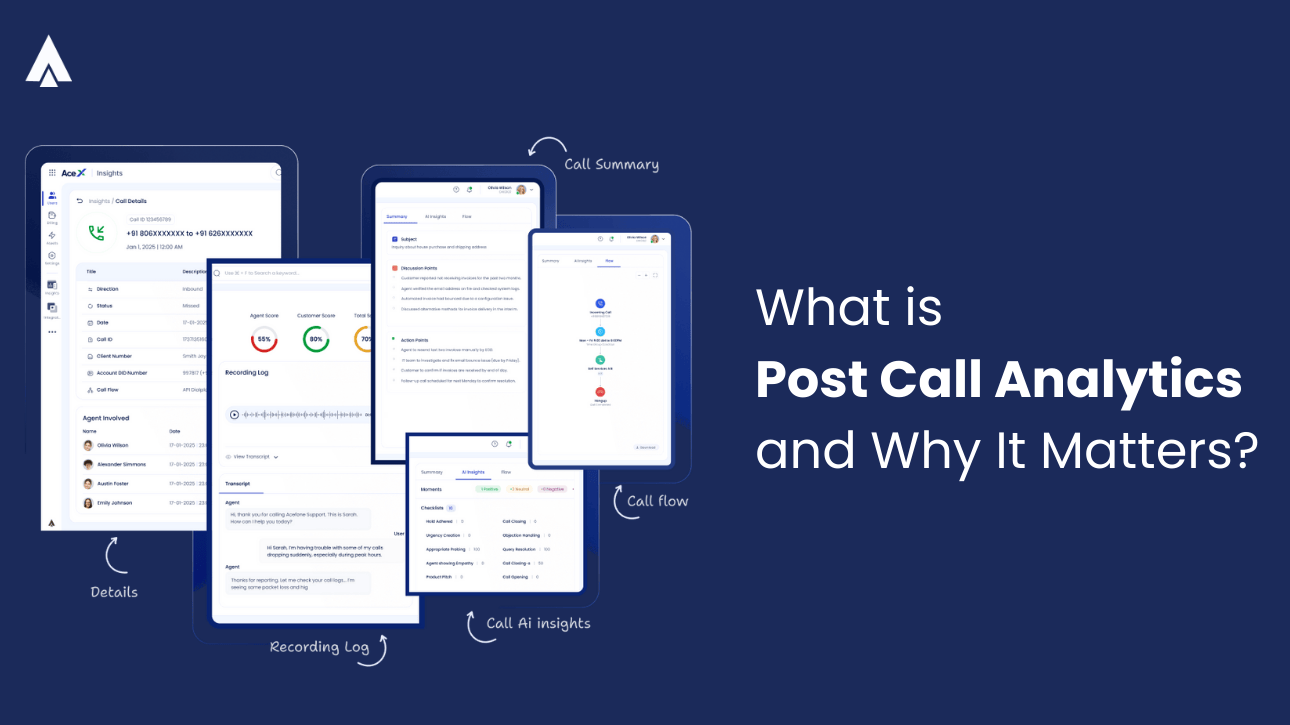TRAI’s updates in the TCCCPR regulations proposed mandating financial entities to use the 160 number series for service and transactional calls. With this, they aim to curb Unsolicited Customer Communication (UCC) and protect the users from fraud.
Before this update, TRAI had mandated businesses to use numbers starting from 140 to make calls. But there wasn’t any distinction between telemarketing, transactional and service-related calling. With the introduction of the 160 series, there is a fresh framework to manage customer communication end-to-end.
These updates will have a significant impact on how you communicate with your customers. You might need to alter inbound and outbound workflows, adopt new practices, and onboard communication partners.
Here is everything you need to know about the 160 series and the changes in TRAI guidelines in mobile number portability.
What is the 160 Number Series?
The 160 number series is a specialized 10-digit phone number range. It is exclusively reserved for regulated entities to conduct transactional and service-related calling. Unlike regular commercial numbers that anyone can obtain, these numbers are strictly controlled and allocated only to verified organizations that meet specific regulatory criteria.
The series is divided into two distinct categories:
- 1600 Numbers: Reserved for government entities, regulatory bodies, and public sector organizations. These follow the format 1600ABCXXX, where “AB” represents the telecom circle code and “C” indicates the telecom service provider.
- 1601 Numbers: Designated for private sector financial institutions regulated by the Reserve Bank of India (RBI), Securities and Exchange Board of India (SEBI), Insurance Regulatory and Development Authority of India (IRDAI), and Pension Fund Regulatory and Development Authority (PFRDA). These numbers follow a similar format: 1601ABCXXX.
What Are TRAI’s Latest UCC Guidelines?
The TCCCPR updates primarily aim to build a calling framework that ensures maximum privacy for the customers. Here are the key changes implemented:
- Digital Consent: Businesses must get explicit digital consent from their customers before sending any commercial messages. This applies to the Principal Entities (PEs)- the company that is sending the message or making the call, and Access Providers (APs)- internet or phone network providers. The APs are also responsible for creating a single Digital Consent Acquisition system to register and store customers’ consent data online.
- DLT Platform Registration: Telemarketers are required to register on the DLT platform before they start calling, ensuring that all calls are properly authorized and regulated.
- 140 Number Series: The “+91-140″ number series is assigned for promotional, transactional, and service calls. Businesses from all industries are mandated to use 140 numbers to make telemarketing calls. However, for transactional calling, the BFSI sector is an exception.
- 160 Number Series: The “+91-160″ number series is reserved for transactional and service-related calls by the BFSI sector.
- Aggregator Collaboration: All businesses must partner with licensed aggregators to comply with the regulatory requirements.
Why Do Customers Receive Calls from 160 Numbers?
Understanding why customers receive calls from 160 numbers helps you determine whether this communication channel aligns with your business operations. The 160 series is strictly limited to transactional and service-related communications. You are not allowed to use them for promotional activities.
Eligible Use Cases for Your Business:
The following industries can significantly benefit from secure, scalable, and compliant communication solutions to enhance customer engagement & operational efficiency.
1. Banking and Financial Services:
- Account verification
- KYC compliance
- Suspicious transaction alerts and fraud prevention
- Loan application status updates
- Credit card activation confirmations
- Payment due reminders
- Account statement notifications
- Secure OTP delivery for two-factor authentication.
2. Insurance Operations:
- Policy renewal reminders
- Claim status updates and documentation requests
- Premium payment notifications
- Policy maturity alerts
- Beneficiary update confirmations
- Mandatory policy servicing communications.
3. Securities and Investment Services:
- Demat account operation confirmations
- Trade execution notifications
- Margin call alerts
- Portfolio rebalancing updates
- Mutual fund transaction confirmations
- Regulatory compliance communications.
4. Government and Regulatory Bodies:
- Pension fund distribution updates
- Regulatory compliance notifications
- Official service announcements
- Citizen enrollment confirmations
- Benefit disbursement alerts.
5. Critical Restrictions to Note:
TRAI strictly prohibits promotional use of 160 numbers, and violations can result in number suspension, heavy penalties, and blacklisting from the DLT platform.
This distinction is crucial for your communication strategy planning. If your business requires both transactional and promotional communications, you’ll need to maintain separate number series. The 160 numbers can be used for transactions and 140 for promotions.
If you want to learn about Call center Software, Visit us now.
Is the 160 Number Series Safe or Spam?
Understanding the safety framework is essential not just for compliance but for protecting your brand reputation. The good news is numbers in 160 series are completely safe and regulated. Let’s learn more.
1. Why 160 Numbers Are Inherently Safer:
The regulatory framework ensures that every 160 number is traceable to a verified organization registered on the Distributed Ledger Technology (DLT) platform. This creates complete accountability. If any organization misuses the number, TRAI can immediately trace them back to them. This makes compliance a business imperative rather than an option.
Only organizations regulated by RBI, SEBI, IRDAI, PFRDA, and government entities can obtain these numbers. This exclusivity gives your calls immediate credibility that regular numbers cannot provide.
The DLT platform requires you to pre-register all communication templates, ensuring transparency in what messages you send to customers. This reduces the risk of fraudulent communications being associated with your organization.
2. Business Implications of the Safety Framework:
Your organization benefits from the “safe by association” principle. When customers see a 160 number, they’re more likely to answer because the entire series has built-in credibility. However, this also means you must maintain impeccable compliance standards. Any misuse can invite stricter regulatory scrutiny.
3. Protecting Your Business from Spoofing Risks:
While the 160 framework is secure, sophisticated scammers may attempt to spoof these numbers. This creates a reputational risk for your business. To mitigate this, implement robust customer education programs informing them about your legitimate 160 numbers. You should also establish clear protocols for what information you will and won’t request over calls and provide alternative verification channels.
Benefits of Using 160 Series Numbers
For regulated entities evaluating whether to invest in 160 numbers, the benefits extend far beyond simple compliance. They represent a strategic competitive advantage in customer communication. Here’s how:
1. Dramatically Improved Call Answer Rates:
Call answer rates for 160 numbers are likely to be significantly higher than regular 10-digit numbers. Customers have become increasingly selective about answering unknown calls due to spam fatigue. When they see a 160 number, they will recognize it as a legitimate, verified call from a regulated entity, making them far more likely to answer.
2. Elimination of Spam Filters and Call Blocking:
Regular business numbers increasingly face spam flagging by telecom operators and smartphone applications like Truecaller. Once flagged, your call completion rates plummet, making customer outreach nearly impossible. The 160 series bypasses these filters entirely because they’re recognized at the system level as legitimate service numbers.
3. Enhanced Brand Trust and Credibility:
The exclusivity of 160 numbers creates a “verified badge” effect for your organization. Customers understand that not just any business can obtain these numbers, only regulated, legitimate entities. This association immediately elevates your brand’s trustworthiness in customer perception.
4. Regulatory Compliance and Risk Mitigation:
Using 160 numbers ensures your organization remains compliant with the latest TRAI regulations, protecting you from penalization. Compliance saves you from heavy fines that can reach ₹50 lakh per violation, service suspensions, and reputational damage.
How to Get a 160 Number for Your Business
If the aforementioned technical talk sounds daunting, don’t worry. Acquiring 160 numbers is simple. You don’t need to navigate any regulatory or technical process.
Here’s how you can get the number for your company:
- Get in touch with a provider: Connect with a cloud telephony service provider that offers 160-series numbers.
- Verify your business: Submit the necessary documents like your business registration certificate, PAN card, and bank account details.
- Register on the DLT platform: With your provider’s assistance, register your business as a principal entity on the Distributed Ledger Technology (DLT) platform. This will whitelist your numbers for transactional and service-related calls.
- Comply with regulations: Make sure your operations align with TRAI regulations, including obtaining customer consent and following the prescribed timing, and frequency norms.
- Activate your number: After completing registration, you can configure and start using your 160 number through your provider’s platform. If you opt for a provider like Acefone, you may also get an omnichannel contact center solution to help you manage customer communication better.
Common Myths About 160 Number Series
As you evaluate 160 numbers for your business, it’s important to separate facts from fiction. Here are the most common misconceptions that can lead to poor decision-making:
Myth 1: 160 Numbers Are Expensive and Only for Large Enterprises
Reality: Cloud telephony providers have made 160 numbers highly accessible with their flexible pricing models.
Myth 2: Any Financial or Insurance Business Can Get a 160 Number
Reality: Eligibility is strictly limited to entities regulated by specific authorities like RBI, SEBI, IRDAI, PFRDA, and government organizations.
Myth 3: Once You Get a 160 Number, You Can Use It for All Business Communications
Reality: 160 numbers are exclusively for transactional and service-related calls. You cannot use them for promotional campaigns, sales calls, product marketing, or any commercial advertising.
Myth 4: 160 Numbers Work Identically Across All of India
Reality: Numbers are allocated on a circle-by-circle basis (state/region). If you operate nationwide, you may need multiple 160 numbers across different circles.
How Does the 160 Number Series Impact 140 Numbers?
With the new 160 numbers in place, here’s how the 140 series will be impacted:
1. Clarity of Purpose
The 160 series is supposed to be used only for service and transactional calls made by government entities and regulated financial institutions. Whereas the 140 series will remain dedicated mostly to promotional calling. Due to this distinction, your customers will no longer mistake your calls for telemarketing attempts.
2. Fraud Prevention
The 160 series will help prevent fraudsters from impersonating legitimate BFSI companies like yours by preventing the use of personal numbers or spoofing numbers from the 140 series.
3. Steppingstone For DLT Inclusion
TRAI is also discussing migrating the 140 series to the Distributed Ledger Technology (DLT) platform. This will help verify consent and further control spam calls originating from 10-digit numbers. This transition is part of broader efforts to enhance regulatory measures against unsolicited commercial communications (UCC) and improve customer protection.
160 Series and National Numbering Plan (NNP)
While the 160 number series is relatively new, it is important to remember that telecom sector in India is well-regulated. This means there are multiple pre-existing laws that govern customer communication. One of the most important regulatory frameworks is the National Numbering Plan (NNP).
NNP provides a set of guidelines for the allocation and of numbers to telephone services delivered over the public networks. The plan also describes the assignment of numbers to international services, trunk service, emergency services, and special services such as voice mail and Intelligent Network (IN) services.
The structure of the national number generally complies with the relevant International Telecommunication Union Standard Sector (ITU-T) Recommendations.
Complying with both regulatory requirements simultaneously might be challenging. Here’s how:
1. Limited Inventory
According to NNP, numbers are a limited resource.
The allocation guidelines set by the 160 series are at a Circle (State) level. This means that each telecom operator only has 1000 numbers per circle. Distributing these numbers among the customers will be challenging. To accommodate this, your telecom providers may need to establish a call volume-to-number ratio that works across the board.
This means that if your company has a centralized setup requiring fewer numbers, you may be able to fulfill your requirements easily. However, if you use third-party agencies, getting your hands on more numbers might be difficult.
2. Impact on Support
Until now, your phone number was one of the unique entities that your telecom service provider used to keep track of your company’s account. If there were multiple branches of your company in the state, each used to have a different number.
All the operational issues, such as downtime, service assistance, or billing, could be tracked using that number.
After the new regulations, multiple branches of your company might have to use the same number. Hence, your telecom operator might face significant difficulties in mapping your issues.
Recommended blog “Inbound Call Center“.
3. Routing Discrepancies
After the implementation of the Unified License regulation for calling, telecom operators are required to hand over calls to each other either in the area where the call started (originating Legal Service Area, or LSA) or where it will end (terminating LSA).
For landline numbers, the number itself indicates where the call originated. However, for mobile numbers, telecom companies rely on a database from Mobile Number Portability (MNP) to know the number’s location.
Implementing the 160 series as a single number that works across locations would make it difficult for operators to figure out where to route calls, reconcile charges, and follow the national routing plans—especially for businesses relying on inbound call center software to manage customer communications efficiently.
Until the telecom operators and TRAI establish clear guidelines for routing, you might face operational inefficiencies and cost-related issues when making calls.
Understanding the intricacies of the TCCCPR can be a bit daunting. However, partnering with a licensed aggregator like Acefone can simplify this process and ensure 100% compliance.
FAQs
A 160 number is a specialized 10-digit phone number series exclusively allocated by TRAI to regulated entities like banks, insurance companies, and government organizations for transactional and service-related communications.
160 calls are inherently safer than regular numbers because all entities must register on TRAI’s DLT platform with complete documentation and regulatory approval. Only verified organizations regulated by RBI, SEBI, IRDAI, PFRDA, or government bodies can obtain these numbers.
Your business can obtain 160 numbers only if you’re a bank, NBFC, or financial institution regulated by RBI; an insurance company under IRDAI; a securities broker or fund regulated by SEBI; a pension fund organization under PFRDA; or a government/regulatory entity.














